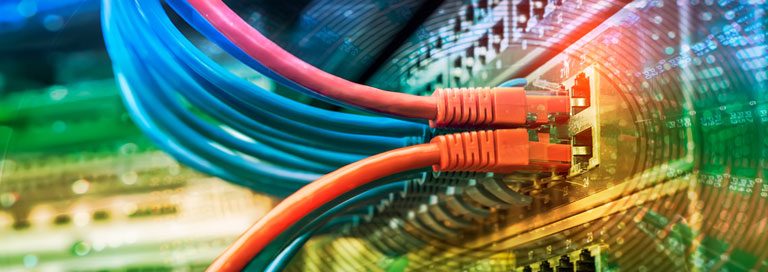Despite the ongoing transition to the cloud, small businesses will still derive a host of benefits from an on-premises network setup.
Cloud infrastructure has changed the way businesses operate by enabling universal access to essential applications, services and system resources. But even as companies move more and more workloads to the cloud, most still need at least a basic on-premises network in order to operate at peak efficiency.
Businesses of all sizes benefit from a server-based local network. It improves productivity and management through shared access to computers, printers, backup devices, applications and storage. It helps satisfy a variety of legal and regulatory requirements for data privacy and security. What’s more, a reliable on-premises network is the key to making fast, secure connections to the cloud.
IT resources such as bandwidth, memory, CPU and quality of service must be properly aligned to support cloud connectivity, particularly in a multi-cloud environment. If the network doesn’t have the capacity to handle the volume of traffic moving back and forth from the cloud, the organization will experience latency and delays that frustrate users and impair productivity.
Although it is possible for startup companies to operate as cloud-only companies at first, most small and midsized businesses (SMBs) will quickly reach the point where they need a network that can grow over time to support new features and functionality. Here’s a brief rundown of essential components and other factors to consider when setting up an SMB network.
Cabling
A structured cabling system comprises all the cabling and associated hardware that supports and connects most of the network infrastructure — including wireless access points (APs). Because of the critical nature of this infrastructure component, new cabling plants should be planned and installed with the help of a certified cabling provider. Although companies often ask electrical contractors to pull network cabling along with other wiring, that’s a risky approach. Poorly deployed cabling can result in performance problems and service interruptions that are difficult to troubleshoot.
Switches and Routers
These are the key hardware components that direct data traffic moving into and out of the network. Switches are the basic building block of any network, connecting computers, printers, servers and other devices to facilitate resource sharing. Routers, meanwhile, connect multiple switches to facilitate communications between discrete networks and service provider Internet access. Routers act as network traffic managers, analyzing data packets and forwarding them to their intended destination across the most efficient route.
Access Points
APs allow devices to connect to the network without cables. They are usually connected to the wired network via Ethernet and then transmit a Wi-Fi signal that extends bandwidth across an area. Any Wi-Fi-enabled devices within range can then connect to the network and the Internet.
Servers
One or more servers are required to support any business applications that will be maintained maintain onsite. A server is particularly important for any applications that require a secure database, such as back-end accounting and human resources applications. A server can also be used for centralized data storage where multiple users require access to the same data. Servers are also used for email, backup, user authentication and other functions.
It’s best to consult with an IT solution provider when selecting servers. Someone with expertise in server sizing can help ensure companies have the right number of servers with the appropriate amount of processing power, memory and hard drive space to meet their business requirements.
Server Racks
Small businesses often start out by stacking server hardware and network appliances on a desk or a shelf in a closet. That’s not a good long-term solution. IT equipment needs conditioned power and adequate cooling to function properly, and it should be secured against accidental or intentional tampering. Ideally, SMBs should use server rack enclosures that incorporate power, cooling, cable management and physical security.
Security
A firewall is the most important security component in your network, creating a barrier between the trusted internal network and untrusted external networks such as the Internet. Firewalls inspect data packets coming through the router, using a set of defined rules to allow or block traffic. A next-generation firewall also integrates advanced features such as intrusion prevention, web filtering, multifactor authentication and endpoint protection. Antivirus, antimalware and email filtering software are also important network security solutions.
Quality
Setting up a small business network doesn’t have to be terribly expensive, but buying inexpensive, consumer-grade technology for your business can result in significant hidden costs. For example, off-the-shelf wireless routers are designed for easily setting up a home network, but they won’t provide any of the load-balancing, traffic-shaping or security features of a business-class device. Budget servers with consumer-grade processors typically have a short lifespan, fewer features and more security issues than commercial-grade hardware.




